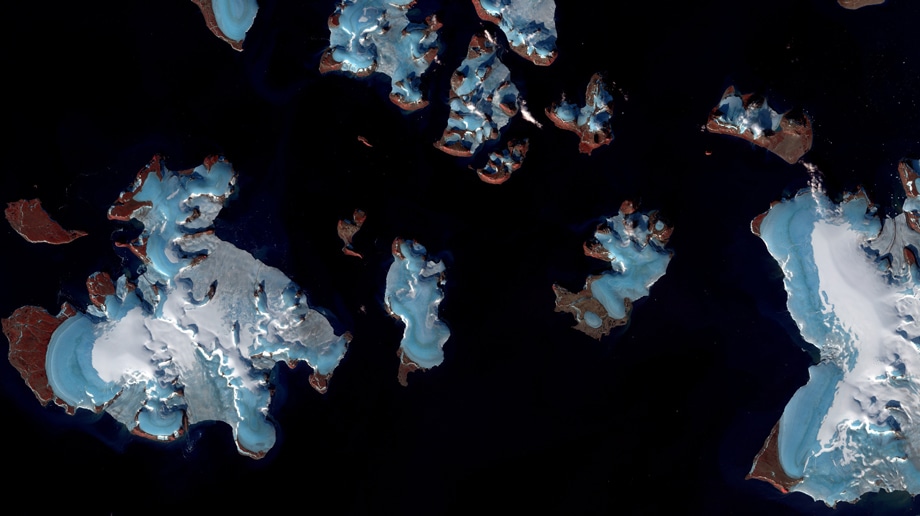Apr 9 2019
Sea levels are increasing as a result of melting ice sheets in the Antarctic and Greenland regions and also due to melting glaciers around the world.
 Melting glaciers in Russia’s Arctic territory. This image shows the blue glaciers on the reddish-brown Franz Josef Land archipelago in the Arctic Ocean (black). The glaciers (blue) are covered with little or no snow (white), which is a clear indicator of significant loss of mass. (Image credit: Copernicus Sentinel data 2017)
Melting glaciers in Russia’s Arctic territory. This image shows the blue glaciers on the reddish-brown Franz Josef Land archipelago in the Arctic Ocean (black). The glaciers (blue) are covered with little or no snow (white), which is a clear indicator of significant loss of mass. (Image credit: Copernicus Sentinel data 2017)
Now, according to an international research team under the direction of UZH, between 1961 and 2016, glaciers alone have lost over 9,000 billion tons (that is 9625000000000 tons) of ice, increasing the global sea levels by as much as 27 mm in this period. Glaciers in Alaska are the largest contributors, followed by the melting ice fields located in Patagonia, and the glaciers situated in the Arctic areas. In addition, glaciers in New Zealand, the Caucasus mountain range, and the European Alps were also subject to considerable ice loss, but owing to their comparatively small glacierized areas, they have only a minor role to play when it comes to the rising sea levels all over the world.
Combination of field observations and satellite measurements
For the latest analysis, the international research team headed by UZH combined geodetic satellite measurements with glaciological field observations. The former digitally determine the Earth’s surface, offering data on the changes of ice thickness at various points in time. As a result, the investigators were able to rebuild the changes observed in the ice thickness of more than 19,000 glaciers across the globe. This was also feasible, thanks to the in-depth database compiled by the World Glacier Monitoring Service from its global network of observers, to which the investigators added their own satellite observations.
By combining these two measurement methods and having the new comprehensive dataset, we can estimate how much ice has been lost each year in all mountain regions since the 1960s. The glaciological measurements made in the field provide the annual fluctuations, while the satellite data allows us to determine overall ice loss over several years or decades.
Michael Zemp, Study Lead and Glaciologist, Department of Geography, University of Zurich.
335 billion tons of ice lost each year
In the last three decades, the global mass loss of glacier ice has increased tremendously and presently amounts to 335 billion tons of lost ice every year. This matches with the increased sea levels of nearly 1 mm every year.
Globally, we lose about three times the ice volume stored in the entirety of the European Alps – every single year!
Michael Zemp, Study Lead and Glaciologist, Department of Geography, University of Zurich.
Consequently, the melted glacier ice accounts for 25% to 30% of the present increase in global sea levels. This ice loss of all glaciers more or less corresponds to the mass loss of Ice Sheet in Greenland, and obviously surpasses that of the Antarctic.